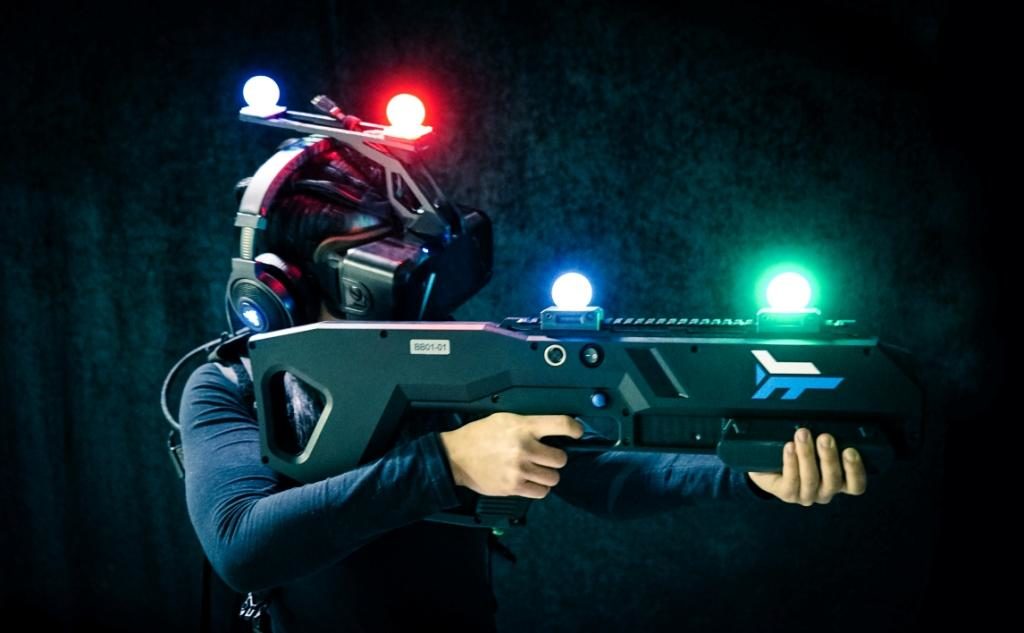Melbourne, Australia-based Zero Latency is making a name for itself in the burgeoning virtual reality (VR) arcade industry. The company has expanded its operations to four continents after creating and fine-tuning its multiplayer free-roam, warehouse-scale arcade concept. Zero Latency currently has VR arcades in Orlando (Florida), Wisconsin and the Poconos (Pennsylvania) with plans to open multiple spaces across the country, including a pair in the Greater Boston area. By June 2017, the company will have 10 global locations, and 24 by the end of this year. There are already plans to expand to cities like Philadelphia in 2018.
“We’ll continue to open and operate our own sites, but we’ll also continue to partner with some really strong partners,” Tim Ruse, CEO of Zero Latency, told AListDaily. “It’s a licensed approach and an on-site approach. We have licensed partners like Sega of Japan in Tokyo all the way down to people in the cinema space, or larger real estate developers that we work together with.”
Zero Latency’s patent-pending motion tracking system enables teams of up to six players wearing portable virtual reality gear to participate simultaneously in cooperative video game experiences in warehouse-sized spaces that range from 2,000 to over 4,000 square feet. Scott Vandonkelaar, CTO of Zero Latency, told AListDaily that up to eight players will be able to shoot killer robots, defend a fort against zombies and explore alien landscapes across its growing library of multiplayer games later this year.
“We’re moving out to eight players with our local testing group in Melbourne and we’re going through the operational requirements of equipment charging and other technology before rolling it out to all of the sites,” said Vandonkelaar.
The team in Australia built out everything from the guns to the vests. The company also partnered with Razer OSVR to utilize its headsets and worked with Alienware to pack a powerful laptop into a vest that players can wear without being bogged down. Additionally, players wear Razer headsets to communicate with teammates and the Game Master during the experience.
Zero Latency-powered arenas have no physical walls or obstacles, which means players walk, explore and fight their way through different video game worlds developed by a team in Melbourne. Right now, there’s a zombie apocalypse game, Survival, which combines fortifying your construction yard in-between waves of assorted undead. There’s the gravity-defying multiplayer puzzle-solving adventure, Engineerium, which isn’t for those with vertigo issues. Then there’s Singularity, a sci-fi game where players take on an army of killer robots inside a gigantic spacecraft.
New games are in development and will be added to the library along with new maps and modes for existing games. “We’re developing a new zombie game and we’re channeling what we’ve learned from feedback from the first three games,” Vandonkelaar said. “The onus will be on the operator to decide which games to run, similar to a multiplex theater with multiple movie options. You can run more family-focused games during the day and more adult content at night.” An upcoming software development kit will allow third-party development studios to create their own games for the Zero Latency VR arcade platform. In fact, Zero Latency is already collaborating with external studios on some unannounced VR games.
“We travel the world speaking to different companies about film and IP,” Ruse said. “As the system scales, it’s about finding the right IP and bringing that together with VR. This is a fantastic opportunity to allow people to explore the worlds they love from the movies like Aliens, Harry Potter or The Walking Dead.”
“We’re working with some great larger content partners with popular IP,” Vandonkelaar added. “From a game design perspective, and how the players can interact with each other, you’ve got to completely switch your thinking to create compelling content that doesn’t feel silly or make players feel nauseated or cramped.”
The system allows operators to configure these games differently. The upcoming Woburn and Marlborough locations in the Boston suburbs will each be configured with dual 2,000 square foot arenas under one roof, enabling licensee MindTrek the flexibility to offer two different games at the same time, or utilize the space as a single 4,000 square foot arena for larger free-roam experiences. These will be the only dual-arena facilities in the world and the largest free-roam VR gaming facilities in America by far.
Zero Latency has also built a true platform across these VR arcades, which has laid the foundation for esports. “We’re doing a lot of experimentation around esports,” Vandonkelaar explained. “We’re taking it very seriously, doing prototype work and bringing all the knowledge we have from 100,000 players going through these locations to develop esports for free-roam VR.”
Vandonkelaar said each site has the ability to link together and the system is built architecturally from the ground up, creating an interconnected web for future VR experiences.
“We can drop in whatever works in this VR canvas and link them together,” Ruse explained. “A core part of our five-year plan is to look at what’s the next thing and how do we leverage multiple players and multiple sites.”
“Esports in VR is going to be great,” said Vandonkelaar. “Our system makes for a great spectator sport because it’s fun to watch people run around in the real world and see how that translates to the virtual world through TV screens.”
Ruse believes there’s a lot Zero Latency can do when they have a lot of sites that can be easily connected in regions. The other thing Zero Latency has seen with its current client base, which should translate to esports perfectly, is the viral element. He observed how players don’t come in with the same group over and over again. Instead, they become champions of the product and bring other people with them. Then those friends come back with other friends, and so on.

